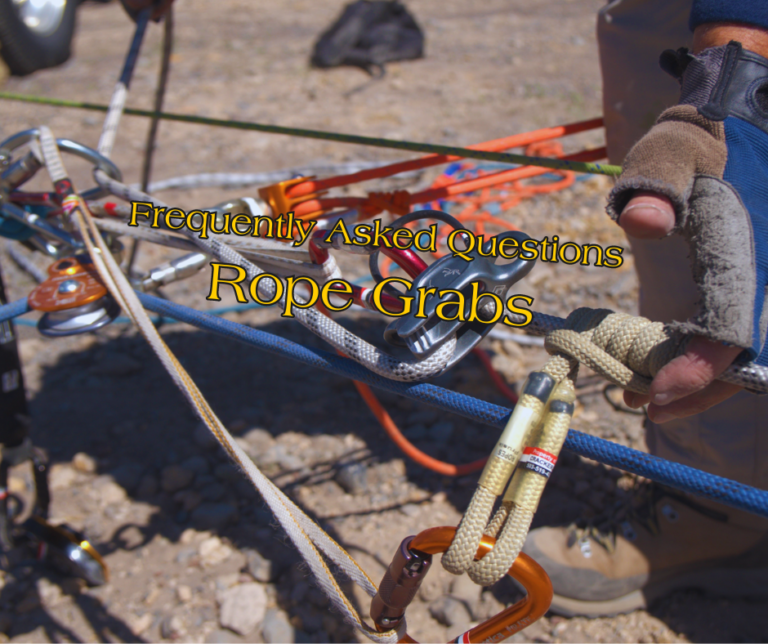Choosing the Right Rope Grab for Rescue Operations
Choosing the right rope grab for rescue operations is critical technical rope systems, providing secure and adjustable connection points during climbing, rigging, and rescue operations. Selecting the right rope grab depends on understanding the specific demands of the task, the rope being used, and the operational environment. With two primary types—soft and hard—rope grabs offer distinct advantages and limitations, each suited to different scenarios.
Soft Rope Grabs: Adaptability in Action
Soft rope grabs, made from cordage materials, are renowned for their flexibility and lightweight design. These tools are highly versatile, easily accommodating various rope diameters, and are often used for creating Prusik hitches or attaching pulleys. Their simplicity and adaptability make them invaluable for dynamic tasks, particularly in rescue and rigging systems.
However, soft rope grabs can present challenges in certain situations. They tend to bite into the rope under load, which can make resetting pulley systems difficult. Additionally, while they are excellent for static adjustments, their manual operation may hinder efficiency in climbing scenarios where stability and ease of movement are paramount.
Hard Rope Grabs: Strength and Precision
Hard rope grabs, constructed from durable metal components, are engineered for stability and reliability. Their toothed or geared designs provide a secure grip on the rope, making them ideal for climbing, positioning, and high-load scenarios. These devices excel in industrial rescue operations or situations demanding precise control and minimal slippage.
Despite their advantages, hard rope grabs require careful selection to match the rope’s diameter and material. Improper compatibility can reduce their effectiveness and compromise safety. Additionally, their weight and rigid design make them less portable and versatile compared to soft rope grabs, limiting their use in highly dynamic systems.
Key Considerations When Choosing Rope Grabs
Selecting the right rope grab involves evaluating several critical factors to ensure safety and efficiency:
- Rope Compatibility
Rope grabs must be matched to the rope’s diameter and material. Soft rope grabs offer more universal compatibility, while hard rope grabs require precise alignment to perform effectively. - Task Requirements
Consider the specific application. Soft rope grabs excel in creating flexible attachment points, while hard rope grabs provide better performance in climbing and static load scenarios. - Environmental Conditions
Wet, icy, or abrasive environments can impact the performance of rope grabs. Metal rope grabs are generally more resilient under harsh conditions, whereas soft rope grabs may degrade more quickly. - Load and Safety
Rope grabs are not designed for fall arrest or shock loads. In cases of overloading, most rope grabs are engineered to slip before causing catastrophic damage to the rope, acting as a built-in safety mechanism.
Applications and Limitations
While both types of rope grabs play pivotal roles in rope systems, their applications are distinct. Soft rope grabs are favored for their adaptability in creating friction hitches and adjusting pulley systems, while hard rope grabs are the go-to choice for tasks requiring stability and load control. Neither type is suitable for fall arrest applications unless explicitly stated by the manufacturer, as shock loads can compromise their integrity and the rope itself.
Maintaining and Inspecting Rope Grabs
Proper maintenance is essential to ensure the longevity and safety of rope grabs. Regularly inspect both soft and hard rope grabs for signs of wear, corrosion, or damage. Follow manufacturer guidelines for cleaning and storage to maintain their functionality and reliability in critical situations.
Conclusion
Rope grabs are indispensable tools in rope systems, each type offering unique advantages depending on the task at hand. By understanding their differences, limitations, and applications, users can select the appropriate tool to enhance safety and efficiency. Whether crafting a flexible rigging system with soft rope grabs or ensuring stability with hard metal devices, the key to success lies in matching the device to the operation and maintaining it diligently.
For expert training on rope systems and rescue techniques, visit Rigging Lab Academy, and explore high-quality rope grabs at Rescue Response Gear to find the perfect solution for your next operation.
Peace on your days,
Lance









